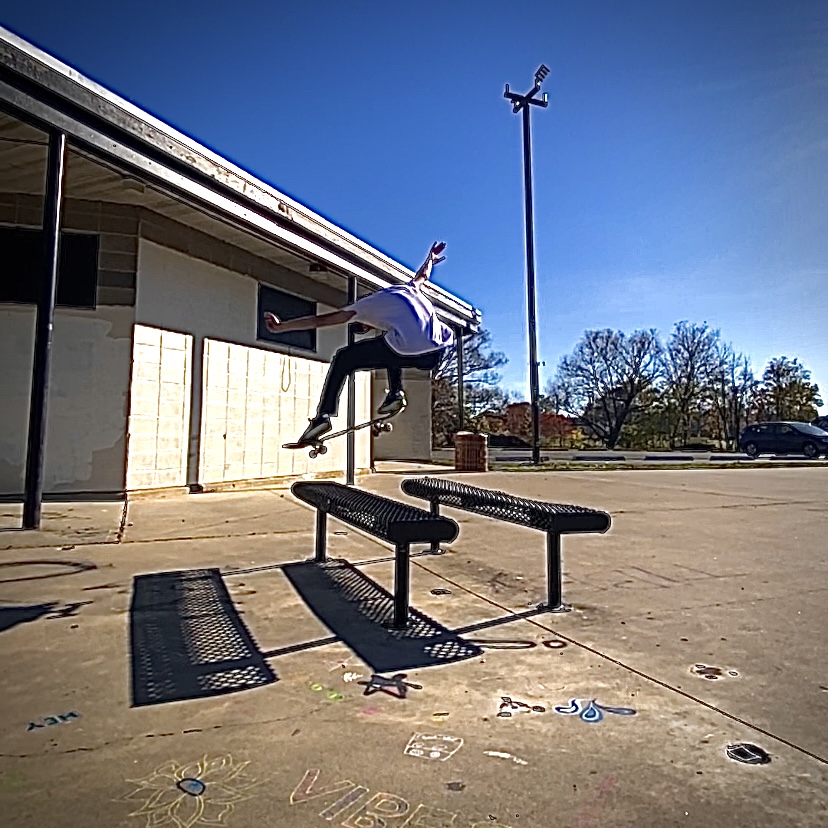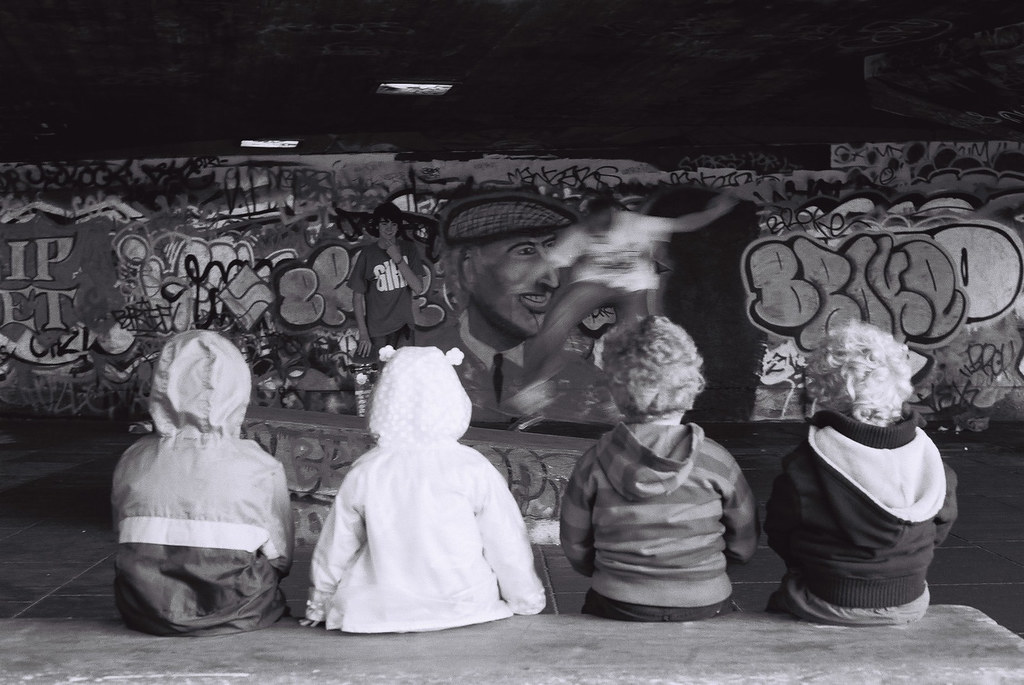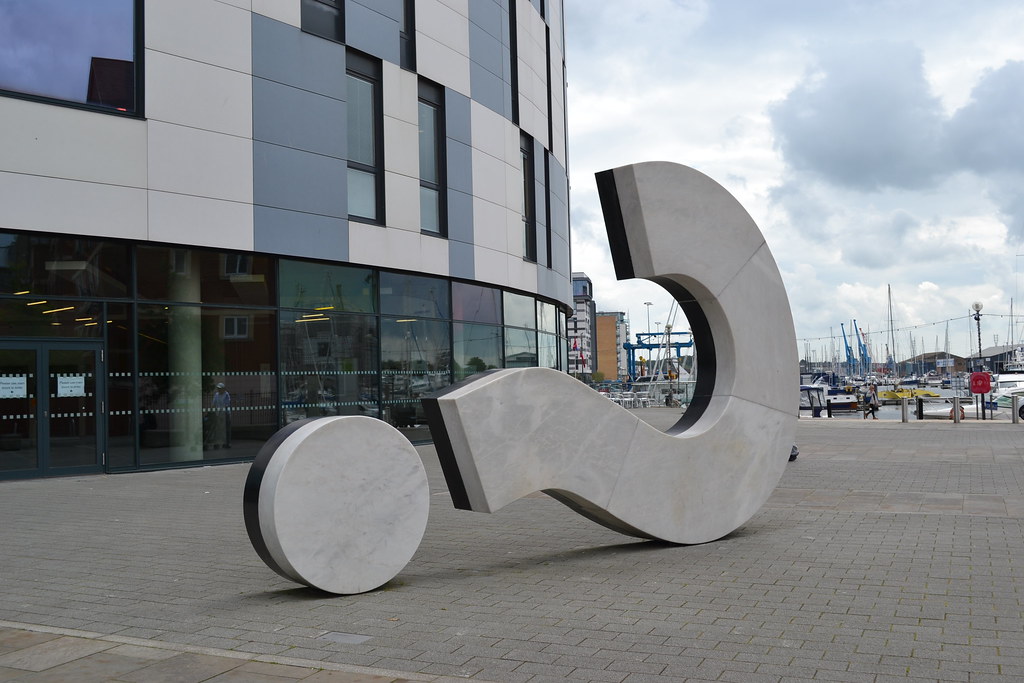“SkateBoard” by TomenoNaoki is licensed under CC BY 2.0.
Skateboarding, as both a sport and a culture, has undergone numerous changes from the 1950s to present day. While skateboarding’s core values of creativity, style, and self expression have remained the same since the birth of the sport, the technology of the skateboard has changed dramatically from wooden planks with metal wheels to symmetric popsicle shaped decks with concave and a raised nose and tail. These changes have not only affected the standard for skateboard shape and material, but have also expanded its possibilities for skaters all over the world.
Skateboarding stemmed primarily from surfers in the 1940-50s and their desire to replicate the sensation of surfing on land. Skateboards from this time period were not very sophisticated. They typically consisted of a bare wooden plank paired with metal wheels and trucks taken from a pair of old roller skates. Not having a nose or tail to pop meant these skateboards were not at all designed for doing tricks. The hard, metal wheels had a hard time rolling over rough terrain and were pretty much only usable on smooth, concrete or paved surfaces. Furthermore, the trucks had the ability to turn, but not nearly as much or as smooth as the trucks today. It was evident that these boards were the first attempts at providing a solution for the desire to “land surf”.
Throughout the 1950s, skateboards became longer and had a slight camber from nose to tail. These boards more closely resembled surfboards and what we know as “skateboarding” was referred to as “sidewalk surfing” up until this point. By the 1960s, the activity finally got its formal name, skateboarding, and skateboards were starting to be manufactured.
In 1971, skateboarding saw its first big change, the creation of the kicktail deck shape. These decks had an elevated tail that extended past the back truck. They gave skaters more control over the skateboard, allowing them to shift weight onto their back foot and lift the front wheels off the ground. This ability to lift the front wheels off the ground grants the skater the ability to turn much sharper. This mechanic also gave birth to the “manual” and provided the means for almost every flatground trick performed today. The ability to pop off the tail and bring the board up into the air greatly expanded the possibilities for skateboarding.


The next major improvement in skateboarding technology was the development of polyurethane wheels in 1972. Polyurethane was a much better material than metal for making a skateboard wheel. The softness of polyurethane wheels had fostered increased traction, which meant sharper turning and less probability of the wheels slipping, and better performance rolling over rough terrain and debris.
In the year 1975, the design of the skateboard truck was substantially modified and made wider to better suit the urethane wheels that were now state of the art. These first, more modern, skateboard trucks were created by Tracker Designs, Ltd. and consisted of a stationary kingpin, 4 ½ inch triangular hangar, and baseplate with four mounting holes.
Since skateboarding was starting to grow in popularity, numerous skateparks started to emerge. These skateparks started out as just places where skaters would meet up, skate, and occasionally create their own features. These parks later turned into large projects, designed and carried out by engineers and other professionals with the help of many skateboarders’ creative minds. There were approximately 400 skateparks in the United States by the end of the 1970s.
In the year 1989, we see the birth of the double tail board; the first deck attempting to provide a more symmetrical shape. The ability to pop off both the nose and tail of the board was a pivotal development in the realm of skateboarding – especially street skateboarding. This new shape of skateboard created the ability to do nollie and fakie tricks as well as making some already existing flip tricks easier.
Shortly after the first double tail boards were seen, skated, and loved by many in the skateboarding community, the popsicle deck emerged in the early 1990s. The popsicle deck is an almost perfectly symmetrical deck with the only asymmetrical feature being a slightly longer and more elevated nose. This difference in the nose was meant to give skaters more leverage when popping to compensate for their weak foot. These decks were designed purely with performance in mind and are typically the most prominent in street skateboarding. Popsicle decks are still in use today by skaters of all styles (vert, street, and transition), but many people still ride shaped skateboard decks for their uniqueness.
Not only has skateboarding seen immense growth and change, but also the spirit of innovation that continues to drive progress and expand boundaries. From the wood planks with metal trucks and wheels stolen from old roller skates to the popsicle shaped decks paired with precision-engineered trucks and urethane wheels, each alteration represents the strong passion to constantly push for improvement in skateboarding.
Works Cited:
Foley, Zane. “Evolution of Skateboard Shapes.” Red Bull, 7 Dec. 2020, www.redbull.com/us-en/evolution-of-skateboard-shapes.
SurferToday, Editor at. “The Timeline of Skateboarding History.” Surfertoday, www.surfertoday.com/skateboarding/the-timeline-of-skateboarding-history. Accessed 1 Apr. 2024.
USA, Evolve. “How Has Skateboarding Changed over the Years?” Evolve Skateboards USA, www.rideevolve.com/blogs/news/how-has-skateboarding-changed-over-the-years. Accessed 1 Apr. 2024.
“The Invention of the Skateboard: A Brief History.” Board Blazers, Board Blazers, 11 Mar. 2023, boardblazers.com/blogs/all/the-invention-of-the-skateboard-a-brief-history.






